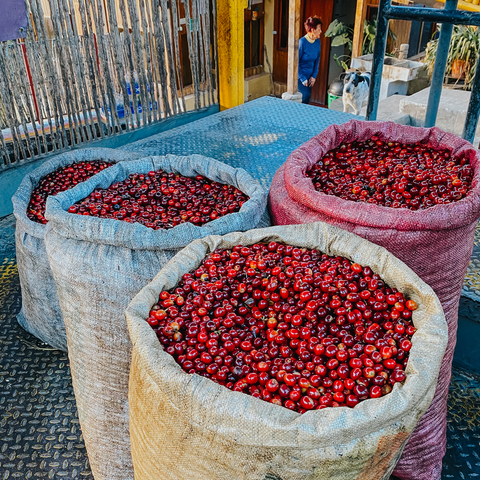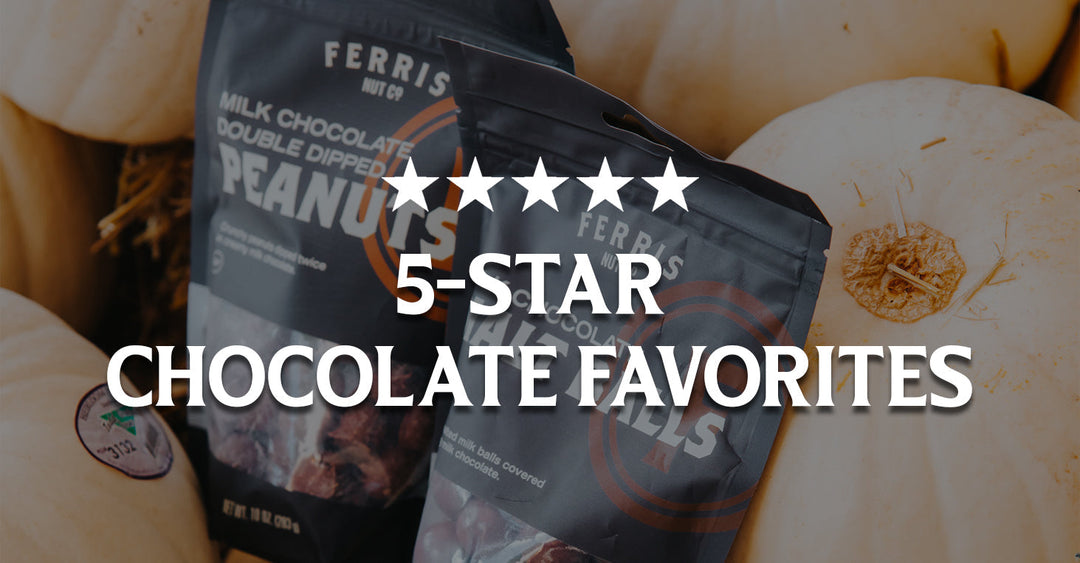Coffee Basics: Roast Levels
Becoming familiar with origin flavor characteristics plays a big part for how we roast coffee here at Ferris. Understanding the different stages of the roasting process is something we don’t take lightly when coming up with a recipe for our coffees.
The coffee world is a complex, global industry. Coffee is the most popular beverage in the world, with more than 400 billion cups consumed each year and more specifically more than 450 million cups of coffee are consumed in the United States every day. So it seems you don't have to travel far to get a cup in your hands. As a specialty coffee roaster, we take great pride in being able to provide you with specialty beans from around the world. We want to make sure you're choosing the coffee you're craving, which is why we're here to break down roasts levels.
Coffee beans are actually a seed of a fruit and are composed of all the essential building blocks that are needed to create a new coffee tree. During the roasting process, we are manipulating these building blocks and creating new components through the application of heat, just like cooking food. Roasting coffee is an art and a science. Each coffee is treated differently when roasting based on the chemical composition and desired outcome of flavor profile. There are some expected flavors that can be achieved from roasting coffee to different “levels”, or degrees of roast, and below is a description of what can be expected from the different roast levels at Ferris.

Roasting Basics
Roast levels are simple how long the coffee seeds are in the roast cooking, just like if you were baking cookies in the oven and want either a gooey or toasted cookie; both of them giving you specific but very different flavors and experiences when you eat them later. Each seed we roast is packed with oils, proteins, sugars, lipids chlorogenic acids, and the caffeine we all love so much. All this goodness is trapped inside by a wall of cellulose, which we want to extract during the roasting process.
The first stage after the beans have initially dropped into the barrel is the “yellowing phase”. This is where the seed turns from green to yellow, releasing a grassy smell as the internal water begins to dissipate, commonly referred to as the “drying phase." This will then lead into “browning” or “Maillard reaction," where the sugars start to caramelize and proteins begin to breakdown.
Bringing us now to "First Crack." This audible pop is moisture sneaking its way out of the seed and leading us into the development stage of roasting where the real flavor begins to emerge from the deep corners of the seed to come out and greet us. Caramelization continues to happen and the integrity of the seed develops into the profile that best represents the flavors available inside.
Light Roast
As a general rule, the vast majority of our coffees at Ferris would be considered “light roasts” when compared to all the available coffee in the market today. This is intentional. We source extremely high-quality green coffee, therefore we want it to taste as much of what makes that coffee unique in the cup. These unique flavors come from the soil composition, growing elevation, coffee varietal, processing method, drying method, and other factors from the origin of where it is grown. When brewed, these coffees tend to have higher levels of acidity and exhibit flavors of fruits, flowers, sweet candies, specific chocolates and nuts, and other highly pointed flavors that make these coffees unique. A “light roast” reveals these flavors rather than hiding them through more application of heat and time in the roasting process.
For a lightly roasted coffee, the seed will look a little wrinkly and brown on their surface when they come out. Light roasts also allow for a vibrant acidity and bring out origin character to shine through. The flavor profiles often attributed to this are floral and fruity flavors with a light tart sweetness, balanced with juicy flavors, and a light body. If you are a new coffee drinker, this can sometimes be a surprising experience because of all the fruity and floral characteristics that come from the natural product. That “traditional” coffee flavor people sometimes expect isn’t often there and if you’re just beginning a coffee journey it can be a bit of a surprise.

Medium Roast
As we progress further in the roasting process, and more heat and time are added, the unique flavors from light roasted coffee tend to fade. On a chemical level, sugars in the seeds are caramelizing further and medium roasts are what we believe to be the point of peak sweetness in coffee. Acidity, fruity, and floral notes tend to be less present and the nostalgic chocolate and nutty flavors in coffee are most present at a medium roast. The body of the coffee, or weight and thickness perception on the tongue, is also increased compared to a lighter roasted coffee. A majority of coffee drinkers identify as preferring medium roasts above all else and we think it’s because the sweet, sugary notes in coffee are at their peak. If you prefer less acidity in your coffee but don’t care for the smokey, charred flavors of dark roasts, we recommend trying our medium roast offerings.
Medium roasts are a great starting place for new specialty coffee consumers because of its approachable flavor and exciting introduction to origin profiles.
Dark Roast
With even more heat and time applied to coffee, we progress into “dark roast” territory. At this point in the roast, the sugar that we’ve caramelized is beginning to char, and progressively turn into more and more carbon. Think about toasting a marshmallow golden brown vs. starting it on fire and turning the outside completely black. The black crust is carbon that has formed from the pyrolytic process of caramelizing sugars deeply. Coffees that have heavily caramelized sugars have a lot of carbon, therefore tend to have notes of smoke, char, very dark chocolate, and sometimes spice. Almost all of the acidity in the coffee is no longer perceivable and the body of the coffee is usually at peak fullness in a dark roast. Sometimes dark roasted coffee can develop an oily surface, which is from fats and lipids inside the coffee seed being forced to the surface. We believe that if oil appears of the surface of coffee, it actually is a sign of over-roasting, so we avoid roasting coffee so dark that oil forms. Our dark roasted coffee is sourced and roasted to achieve flavors like dark chocolate, heavily reduced caramel, and roasted nuts, while providing just a touch of the “char” character that dark roast drinkers look for.
You won’t see many Ferris options that are dark roasted due to our excitement to share origin flavors that our farmers have worked vigorously for, but we have carefully and thoughtfully crafted a few dark roast coffees that we are pretty psyched to share with our customers asking for that dark roast they just can’t let go of.
Once the coffee has found its optimal roast level we take it out of the roast and immediately cool it off, as its internal temperature needs to start decreasing to prevent from negative flavor development.
Be sure to check out our coffee seasonal calendar to see which coffees are available and when throughout the year!






